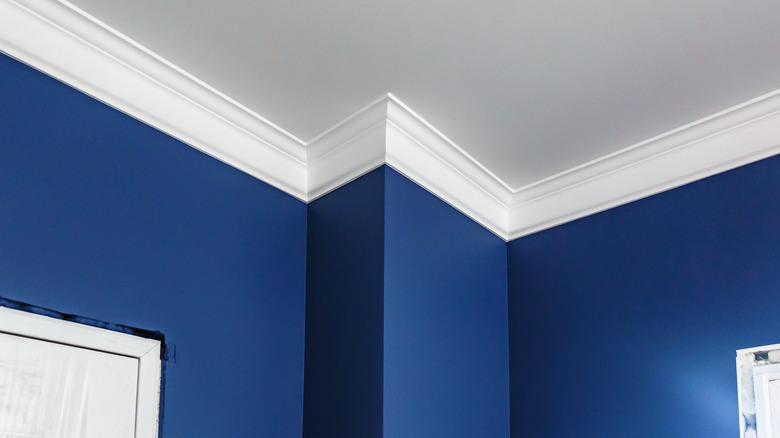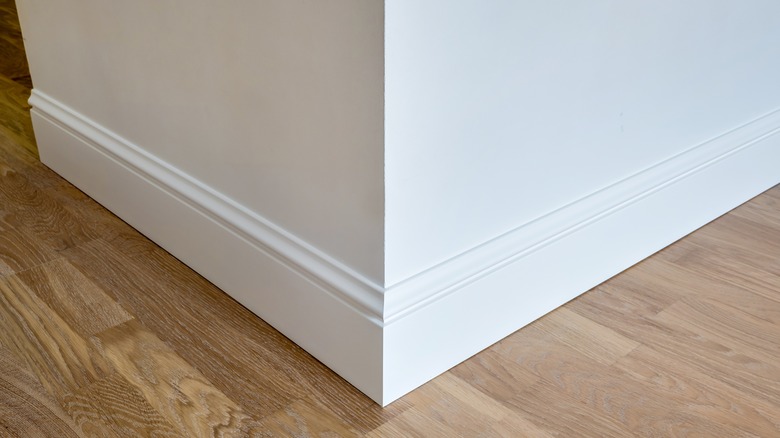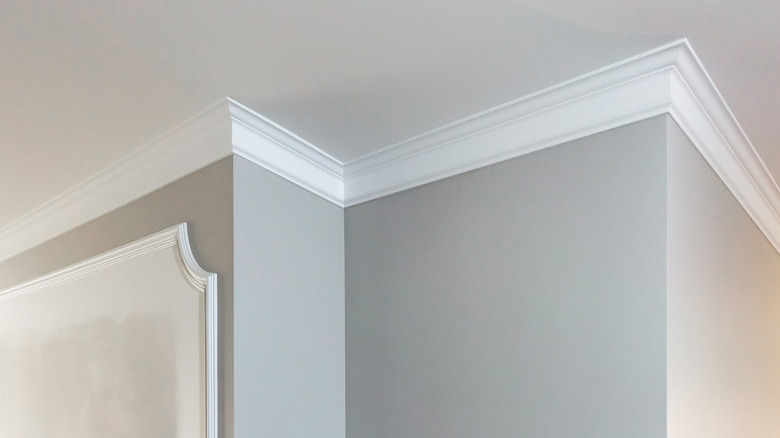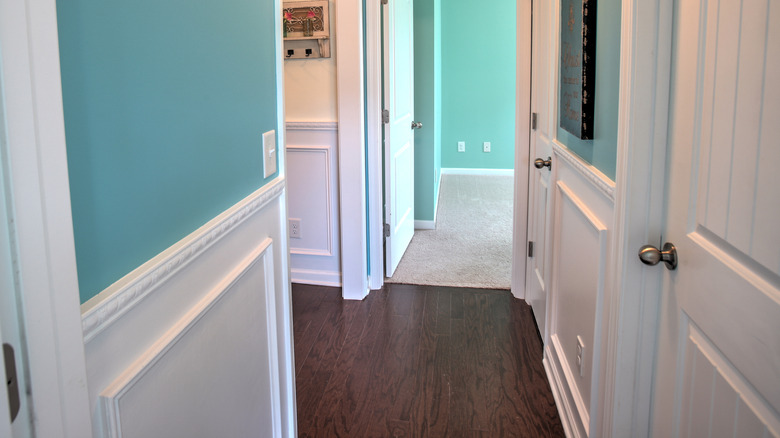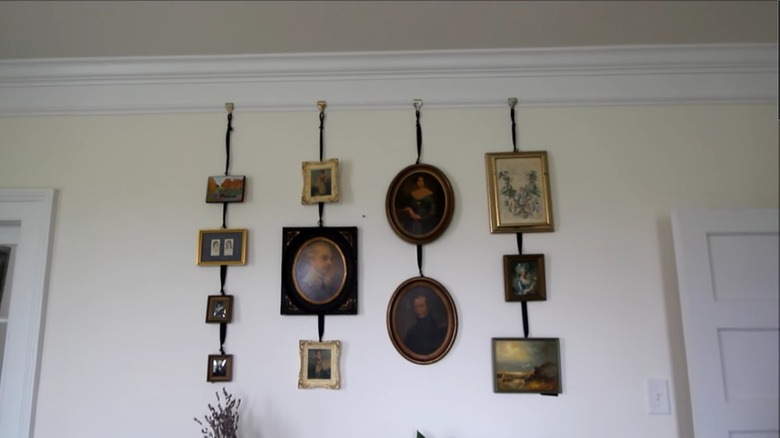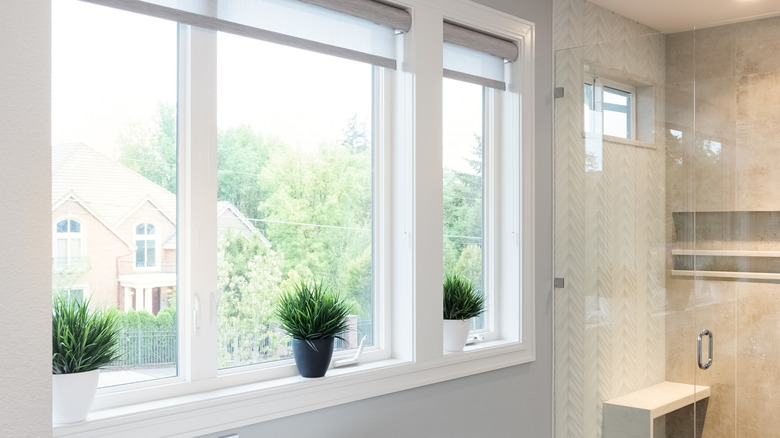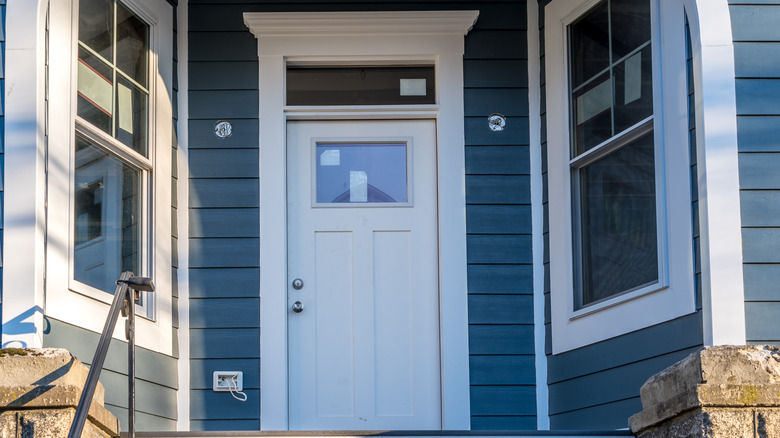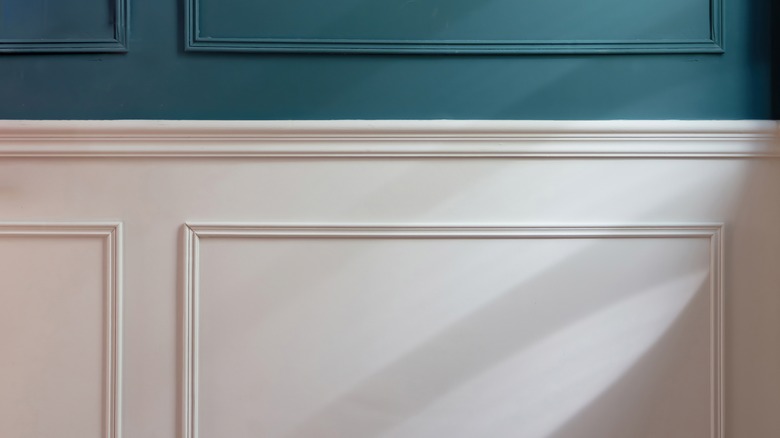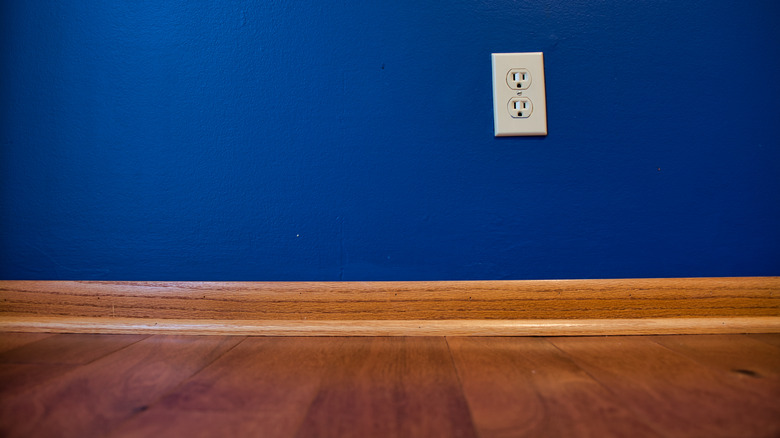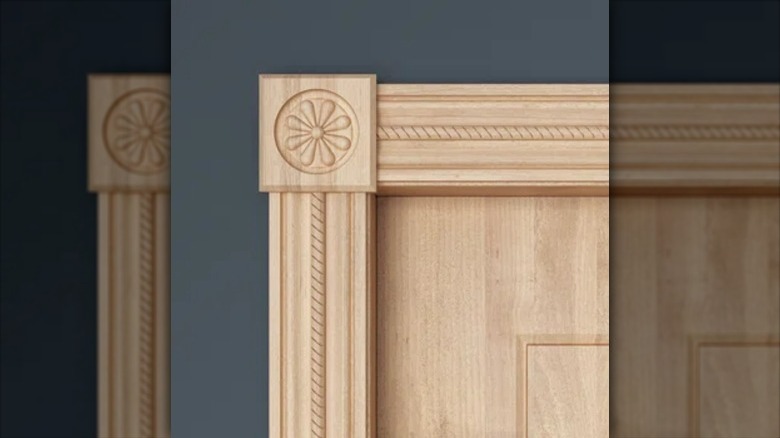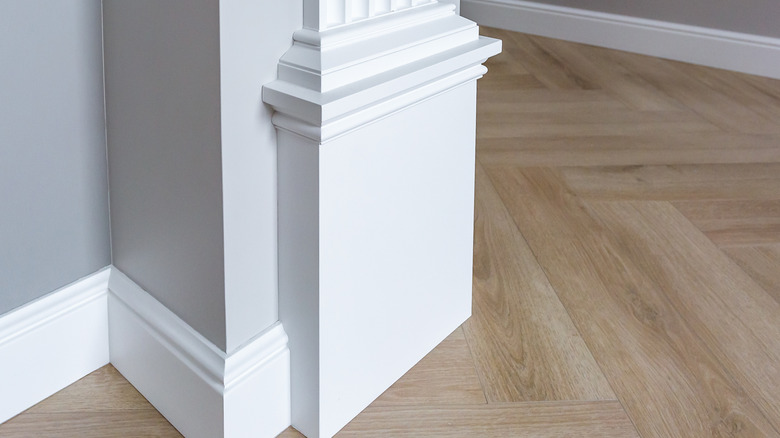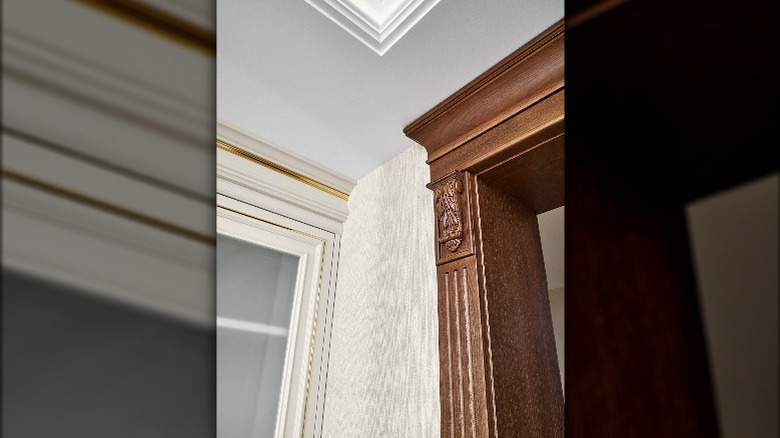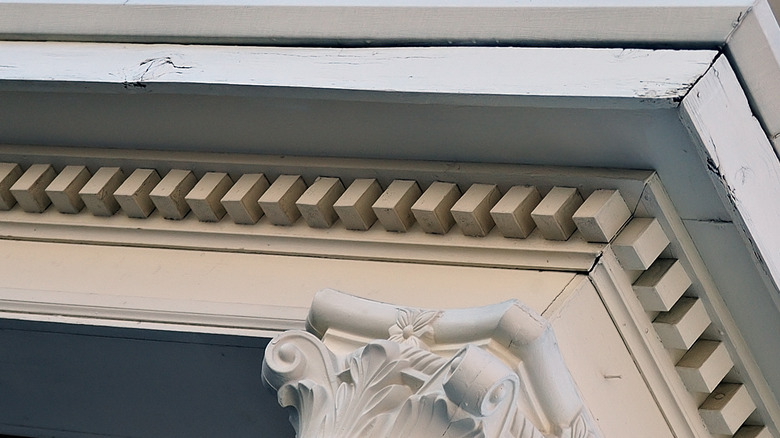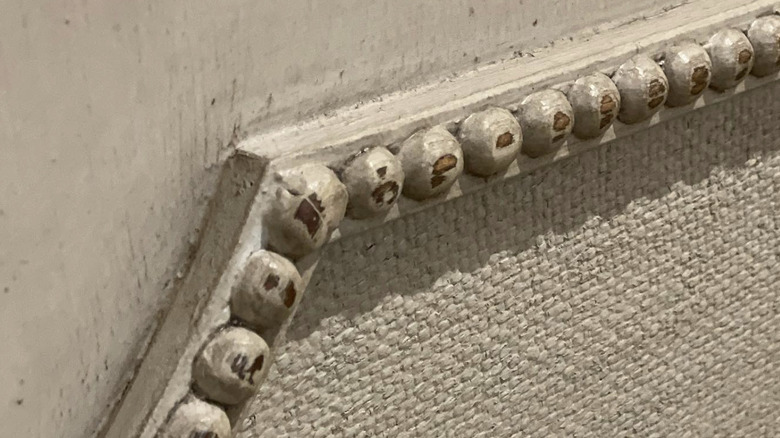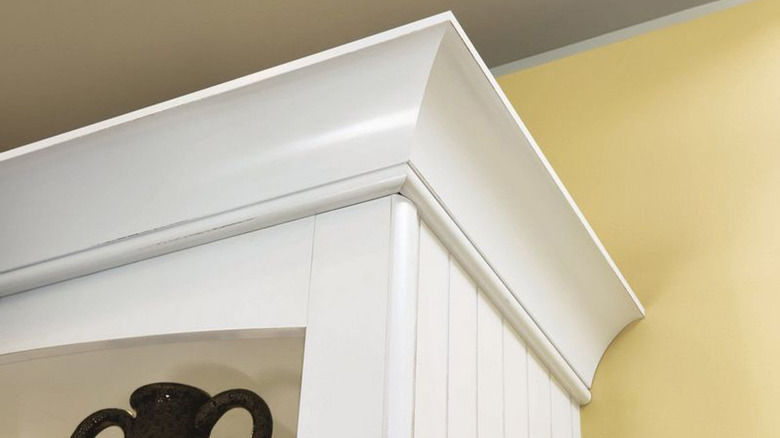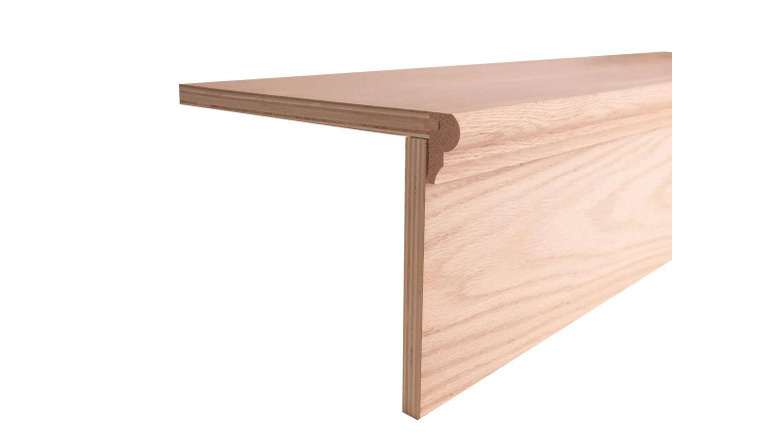Trim Types That Will Improve The Appearance Of Any Room
Trim is a decorative element that designers use to enhance the visual appearance of a room. There are many kinds of trim, but the term usually refers to any decorative molding, like baseboard trim or crown molding. Trim has been used as a design element for centuries, dating back to ancient times when architects used it to adorn the walls of temples and government buildings. This deep love of trim and constant use of it carried on through the Victorian period and smoothly into our modern homes.
We can use trim to add a nice decorative touch to our walls, ceilings, doors, and windows. It can conceal imperfections, make ceilings feel taller, and make rooms seem larger. Trim can even make it easier to hang photos or keep your walls free from scuff marks. While there are dozens of different types, we've listed the most popular here. Each type is well-known, easy to install, and sure to improve the appearance of any room in your home.
Baseboard trim
Baseboard trim is sometimes called base molding or skirting board. It's a type of molding that runs along the bottom of an interior wall where it meets the floor. It's usually made of wood but can sometimes be a composite material, too. There is no standard trim size. Instead, it all depends on the height of your ceilings and your preferences.
Baseboard trim improves the appearance of the room in several different ways. First, it covers the gap between the wall and the floor, which gives the room a more finished look. Trim makes the room more polished and put together when properly installed. If not done correctly, it can be clunky and stick out, so be sure to take your time when putting things together.
Second, baseboard trim can protect the wall from damage caused by furniture or foot traffic. It acts as a barrier against dirt, scuff marks, and dents. If you have a large family, love to entertain, or are trying to fit a lot of furniture into a small space, adding baseboard trim is perfect for keeping things looking newer for longer.
Crown molding
Crown molding is a decorative trim placed right where the walls and ceiling meet. Just like a baseboard, it's usually made of wood, but can also be a composite material. The choice between the two materials is typically based on your budget. Crown molding improves a room's appearance because it adds elegance and visual interest. It makes a room look more finished, as cleverly-placed molding can hide any imperfections in the wall and ceiling joints. These could be smudges, cracks, electrical wiring, cables, or lighting fixtures. The crown molding smooths everything out and keeps what you want to be hidden out of sight.
Crown molding can also make a room look taller and more spacious than it is. It does this by drawing the eye upwards to create a natural transition from the walls to the ceiling. This small visual trick also adds depth and dimension to a room because it keeps your eyes moving. Overall, the molding makes a plain room feel more cohesive and harmonious.
Chair rail trim
Chair rail trim is a decorative molding that you install horizontally on the wall, typically at the height of a chair back, hence the name. Sometimes it travels all the way down to the floor, sometimes it's just a strip. Chair rail trim adds a nice visual point of interest to a room, but it also serves a highly functional purpose.
You usually install chair rail trim about 36 inches up from the floor. When you pull a chair back from the table, it hits the trim, not the wall. This barrier protects the wall from scuff marks, holes, and other types of damage. Most homeowners find it easier to repaint trim or buff out a mark, than try to patch up their walls after damage from high traffic. Because of this, designers most often use chair rail trim in dining rooms and breakfast nooks as the furniture in these spaces is moved around the most.
While it does serve a functional purpose, chair rail trim is also beautiful and can provide a nice decorative element to a room. Adding an eye-catching element halfway up the wall makes your dining space no longer plain but elegant, as this type of trim was often found in many Victorian-era homes. Chair rail trim can also create a great sense of depth and dimension in a space, particularly when used alongside other types of trim, such as crown molding or baseboard trim.
Picture rail trim
Picture rail trim is sometimes called picture molding. It is an entirely decorative molding you install horizontally near the ceiling of a room. In most cases, you would measure between 9 and 12 inches down from the ceiling joint (or the bottom of the crown molding if you have it) and install the trim there.
Picture rail trim traditionally holds picture hooks. This way, you can hang photographs and artwork without using nails or screws, damaging the wall. If you want to change things up, you can easily move the hooks along the picture rail to adjust the height or position of the hanging items. This is great, as you can redesign your displays without putting new holes in the wall each time you want to move something.
It's a great way to add a fun design element to your home without much work. Even if you decide not to hang anything at all, the simple presence of the trim breaks up the monotony of the wall and can make a room seem larger and more appealing.
Window casing trim
Window casing trim is sometimes called window molding. As its name suggests, you install this decorative trim around the perimeter of a window. As with most trim types, there are several reasons window casing elevates your room's appearance. It can cover the gaps between the window frame and the wall. The gaps might be small, so they only cause a visual problem. However, larger gaps might also compromise the home's seal, allowing temperature-controlled air to leak out and bugs and other pests to crawl in. Installing window casing trim can help solve both problems, as it adds an extra barrier.
While the trim is very practical, many choose to include it in their home design because it simply looks fantastic. Occasionally, designers struggle to incorporate windows seamlessly into interior walls. By adding a touch of trim, the windows seem framed. Some might paint the border in a color that complements the color scheme of the room, while others prefer a classic white option.
Door casing trim
Door casing trim is exactly what it sounds like: A type of molding that surrounds a door frame. This type of trim adds a touch of elegance and sophistication to your interior design. It is especially nice to do on the inner side of exterior doors to set them apart from the doors leading to other interior spaces. It also looks fantastic on exterior doors, adding to curb appeal. This trim comes in every style, color, and thickness you can think of. It is easy to customize to fit your specific design aesthetic and budget.
Plus, adding a bit of casing trim to your doors not only makes them look nicer, but also helps to keep them from getting damaged during everyday use. Things like bumps and scrapes are easier to buff out or paint over on trim, rather than the actual door or wall. Plus, the frame can fill any spaces between the door and the wall, making your home more energy-efficient and quieter.
Wainscoting trim
Wainscoting is a type of fancy paneling that goes on the lower part of a wall, usually between the floor and a decorative strip near the top. It can look different depending on your design taste, but it usually has flat or raised panels with a frame around it.
The most common type of wainscoting is beadboard. You can recognize beadboard by its narrow, vertical panels with a line between them. On the other hand, raised panel wainscoting has flat panels that stick out from the wall a little bit. Wainscoting can be made from different materials, like wood or even wallpaper. It can be painted or left natural, too. It looks nice and makes the room feel cozier, while also helping to protect the wall from damage. Plus, wainscoting was very popular in the 18th and 19th centuries, so having it in your home instantly adds a touch of elegance, as this is such a classic style.
Quarter-round trim
Quarter-round trim is sometimes also called shoe molding. The trim is a thin, flexible strip of wood shaped like a quarter-circle, with one flat edge and one curved edge. You could use it to cover the gaps between the baseboards and the floor if one was left during the building process. It's a very commonly used trim because most houses typically have such openings.
When you seal things off with trim, it automatically makes a space seem more tidy. The gap is not only unsightly, but can also be a hard-to-clean crevice where dust, food scraps, and other unwanted grime love to gather. By blocking it off, you save yourself the hassle of trying to clean such a problematic space. Sealing your floors with quarter-round trim can also help keep temperature-controlled air inside, and pests outside. This action lowers your energy bill, keeps cockroaches from running across your living room, and increases the overall livability of the space.
Rosette trim
Sometimes plain trim doesn't suit the style you hope to achieve. If you want your trim to be a décor element in its own right, consider using rosette trim in addition to the plain options to spice things up. Rosette trim gets its name from the circular, flower-like designs often used as a decorative motif on the block.
Unlike trim that runs the length of the wall or window, rosette trim is usually just one decorative wood block. You can use it to accent doorways and window frames by placing one in each corner. You can also evenly space the blocks across the molding to simply make a break in any type of trim.
Rosette trim is typically made of wood, but you can easily paint it to match the color scheme of the border surrounding it. It works well in its natural wooden color to show off the beautiful grain. However, when painted white, black, or even purple, it blends in perfectly with its surroundings and helps the door or window frame seem more finished.
Plinth block trim
While rosette trim has a design, plinth block trim does not. However, it serves the same purpose of providing a break in the trim along the wall, or at each corner of a door or window. Because it doesn't have a design, most decorators use plinth block trim along the floor. You might see it as a stopping point on baseboards in the corner of each room, or at the bottom corners of door and window casings.
While not as ornate as rosette trim, plinth block trim still serves an important visual purpose. Without it, doors and window frames surrounded with trim seem unfinished. The biggest fans of plinth block trim use it to complement rosette blocks at the top of the frames, as having them on all four corners might seem too "matchy-matchy" for some people's taste. Instead, having a plain element supporting the bottom of the design makes things seem clean without being visually overwhelming. In addition, the name "plinth" actually comes from the name for the heavy stone that sculptures rest upon.
Fluted trim
Fluted trim is designed after the majestic fluted columns of the Greek and Roman empires. It has vertical grooves running down its length, and designers often use it on columns, stair banisters, and support beams in modern homes. Because of its continued use for thousands of years, including fluted trim in your home gives the room an air of effortless elegance. Most of us are used to seeing fluted trim in museums, palaces, and important government buildings. When we see it in a living room, it's natural to assign that space the same reverence.
One of the best places to use fluted trim is around the fireplace. Framing the hearth with this trim can help draw attention to the fireplace as a focal point in the room. It's also a good idea to explore using fluted trim on door and window casings if plain trim seems too boring. It's an easy, stylish way to instantly improve any room's appearance.
Dentil molding
Dentil molding looks just like it sounds: it has small, tooth-like blocks arranged in a repeating pattern along the length of a board. The repetition creates a sense of rhythm and detail in design that many enjoy as it creates a bold, strong aesthetic. We see examples of dentil molding in homes, temples, and government buildings as far back as the Greek and Roman empires. In the 1700s and 1800s, designers began reincorporating the style into their client's homes. They did this to make the families seem established, wise, and rich, as their new homes looked just like the wealthy homes of generations past.
In more modern times, dentil molding is used by people of all income brackets to elevate the style of their homes. Without even realizing it, most people still visually associate this type of molding with large manor houses. If you have it lining the walls in your living room, the space will automatically seem more elegant, yet most people won't even be able to put their finger on the reason. It is very versatile and can also be used on furniture, picture frames, and stairways to add a pop of grace.
Bead molding
You will most often find bead molding in homes built during the late 18th century in the United States. These homes, typically known as Georgian and Federal-style houses, result from the period's obsession with classical architecture. Bead molding has the perfect name, as the wooden panels look like a series of small, rounded beads or indentations. This look gives the space a very dainty and elegant feel.
In the 18th century, designers who used bead molding tried to conjure ancient Rome's reputation and grandeur. In modern times, bead molding works twice as hard to remind us of ancient power and the Revolutionary War-era style. While you can add bead molding along the tops of doorways, across walls, and even as picture rail trim, you typically use it in smaller areas as decoration. Think of things like in corners and around doorways to make them seem more exciting, along the edge of a stairway, and even on larger pieces of furniture.
Cove molding
Cove molding (sometimes shortened to coving) is a popular design element from ancient times. However, Americans began using coving in their homes more frequently from the early 20th century. During this time, there was a renewed interest in classical architecture and design, so many architects began to incorporate cove molding into their projects. We see the most examples of coving in homes and buildings built in the neoclassical style, which emphasized symmetry, proportion, and classical themes.
Cove molding has a bold concave shape. In neoclassical homes, designers used wood to create a softer transition from the wall to the ceiling. It made the corners of the room seem softer and less aggressive. In more modern homes, we typically see cove trim on the top of built-in bookshelves and entertainment centers. It adds a touch of elegance and sophistication to these spaces. When you use cove molding, your built-ins look like they are seamlessly appearing from the surrounding walls, rather than just abruptly jutting out of them.
Bullnose trim
Bullnose trim has been used in architecture and design for centuries, dating back to ancient times. However, it became particularly popular in the United States during the Arts and Crafts movement of the late 19th and early 20th centuries. Designers loved its rounded edges and used it to finish off the edges of countertops and stair treads. These areas are typically neglected by more popular trim types, like crown molding or baseboards that focus on the walls.
Instead, bullnose trim adds a fun pop of playfulness where you expect it least. Even though bullnose trim adds visual interest to even the smallest elements in a room, it is not visually overstimulating. Because of this, it's perfect for people who enjoy dabbling in a maximalist style without overwhelming a room with moveable decorations like paintings, vases, or furniture. It also provides the perfect amount of flow and continuity in transitional spaces by softening the otherwise sharp edges of staircases, countertops, and the like.
